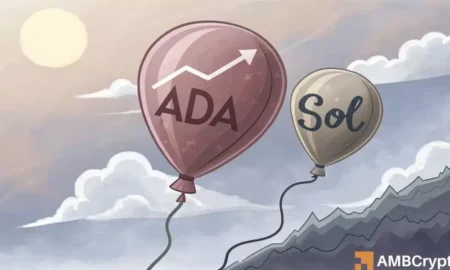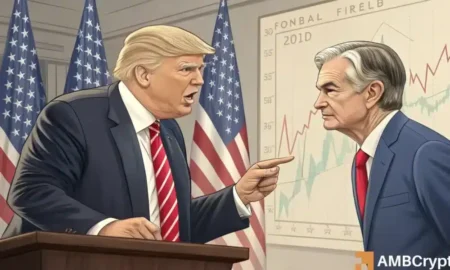The Impact of Macro Volatility on Bitcoin: Unpacking Recent Market Movements
In early April, Bitcoin (BTC) experienced significant turbulence in response to unexpected macroeconomic developments, particularly U.S. President Donald Trump’s tariff announcement. This news shook global financial markets, leading to heightened volatility in Bitcoin and significant movements of dormant coins. Over 18,000 Bitcoin was moved by short-term holders, demonstrating BTC’s acute sensitivity to macroeconomic headlines and external shocks. This article delves into the factors influencing recent Bitcoin price fluctuations and the implications for the cryptocurrency market.
Between April 3rd and 4th, Bitcoin witnessed a striking decline from $88,500 to approximately $81,000, before slightly recovering to around $83,000 at the time of reporting. This swift downturn can primarily be attributed to fears generated by Trump’s tariff shock, which sent ripples through global risk assets. The tumultuous market environment did not just unsettle long-term holders; it ignited a surge of activity among short-term holders, resulting in widespread selling and a frenzy of coin movement.
A particularly interesting trend emerged during this period: long-term holders began to offload dormant Bitcoin, some of which had not been moved for many years. Notably, over 1,057 BTC aged between seven to ten years changed hands for the first time in years. This action contributed to a spike in the Spent Output Age Bands metric, suggesting a broader reaction to the uncertain macroeconomic landscape. At the same time, Bitcoin’s price hovered between $82,600 and $83,800, indicating a mixed response as long-term holders recalibrated their positions in light of both fear and potential profit-taking.
In stark contrast to the behavior of long-term holders, short-term holders also made their presence felt on the market. More than 18,930 BTC held for a period ranging from one month to 18 months were transacted on-chain, reflecting a coordinated response not just limited to panic selling but also a reaction to President Trump’s announcement. Such dynamic movements indicate an overarching sentiment of uncertainty that energized the market.
The selling frenzy coincided with significant inflows into exchanges, particularly Coinbase, where a single block recorded an inflow of 2,500 BTC. This upsurge suggested that larger holders were positioning themselves to exit, as evidenced by the unusually high deposit volumes from whale wallets, some routinely transferring between 10 to 100 BTC in a single transaction. These inflows significantly contributed to the Bitcoin price drop and pointed to a looming bearish outlook, as capital was being moved to exchanges rather than cold storage.
Amidst this chaos, noteworthy anomalies emerged on derivatives exchanges, such as Bybit, where the Taker Buy/Sell Ratio spiked to 5.3, indicating aggressive buying behavior among market participants. This contrasted sharply with the sell-side activity, revealing that while some were eager to offload assets, a considerable number of traders were still confident in Bitcoin’s potential. Overall, this synchronized market activity highlighted how external geopolitical events, like tariff announcements, can lead to rapid outflows and strategic positioning across various holder cohorts.
Despite the short-term turmoil, analysts have noted that geopolitical instability may inadvertently bolster Bitcoin’s appeal as an alternative asset. The potential weakening of the dollar could drive new demand for Bitcoin as a non-sovereign hedge, further complicating the market landscape. However, current indicators suggest that the prevailing sentiment remains one of caution, with short-term fear driving recent price adjustments rather than a broader transition to systemic adoption.
In conclusion, Bitcoin’s recent volatility underscores the cryptocurrency’s sensitivity to macroeconomic factors and market sentiment. As we navigate these turbulent times, it is essential for investors to stay informed about external influences impacting Bitcoin’s value and engage in careful market analysis. Understanding these dynamics will be crucial for anyone looking to invest in or trade Bitcoin amid the ever-evolving financial landscape.
















